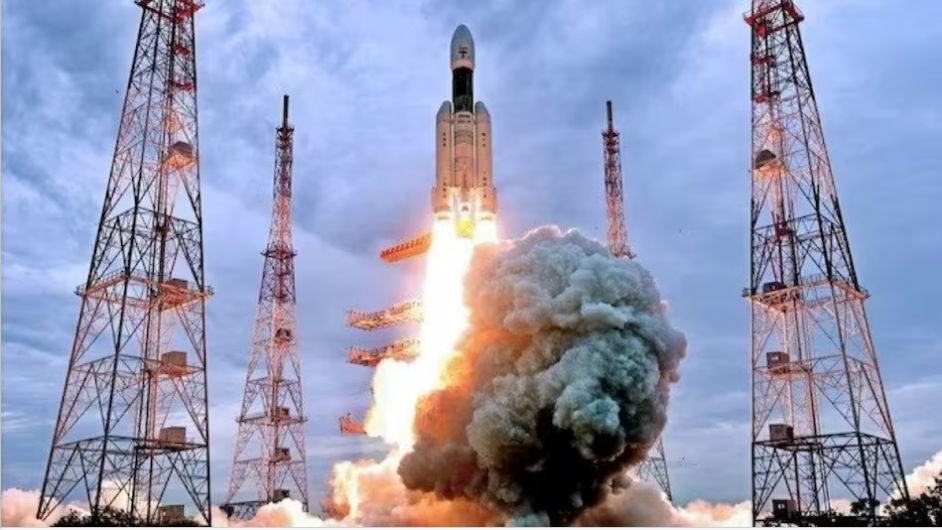ISRO’s ambitious third Moon mission Chandrayaan-3’s Lander Module (LM) is all set to land on the lunar surface today evening, as India eyes to become the first country to reach the uncharted south pole of Earth’s only natural satellite.
The LM comprising the lander (Vikram) and the rover (Pragyan), is scheduled to make a touch down near the south polar region of the Moon at 6:04 pm on Wednesday.
If the Chandrayaan-3 mission succeeds in making a touchdown on moon and in landing a robotic lunar rover in ISRO’s second attempt in four years, India will become the fourth country to master the technology of soft-landing on the lunar surface after the US, China and the erstwhile Soviet Union.
Chandrayaan-3 is a follow-on mission to Chandrayaan-2 and its objectives are to demonstrate safe and soft-landing on the lunar surface, roving on the Moon, and to conduct in-situ scientific experiments.
Chandrayaan-2 had failed in its lunar phase when its lander ‘Vikram’ crashed into the surface of the Moon following anomalies in the braking system in the lander while attempting a touch down on September 7, 2019. Chandrayaan’s maiden mission was in 2008.
The Rs 600 crore Chandrayaan-3 mission was launched on July 14 onboard Launch Vehicle Mark-III (LVM-3) rocket, for a 41-day voyage to reach near the lunar South Pole.
The soft-landing is being attempted days after Russia’s Luna-25 spacecraft crashed into the Moon after spinning out of control.
After the second and final deboosting operation on August 20, the LM is placed in a 25 km x 134 km orbit around the Moon.
The module would undergo internal checks and await the sunrise at the designated landing site, ISRO has said, adding that the powered descent — to achieve soft-landing on the Moon’s surface — is expected to be initiated at around 5:45 pm on Wednesday.
A day before the scheduled touch-down, ISRO on Tuesday confirmed that the Chandrayaan-3 mission is on schedule.
The space agency said the Mission Operations Complex (MOX), located at the ISRO Telemetry, Tracking and Command Network (ISTRAC) here, is buzzing with energy and excitement.
“The mission is on schedule. Systems are undergoing regular checks. Smooth ailing is continuing,” ISRO said in an update this afternoon, adding that the live telecast of the landing operations at MOX/ISTRAC begins at 5:20 pm on Wednesday.
ISRO’s Space Applications Centre Director Nilesh Desai said, “If any health parameter (of the lander module) is found abnormal on August 23, then we will delay the landing by four days to August 27.”
ISRO on Tuesday also released images of the Moon as captured by the Lander Position Detection Camera (LPDC) of the Chandrayaan-3 mission on August 19, and by Lander Imager Camera 4 on August 20.
LPDC images assist the LM in determining its position (latitude and longitude) by matching them against an onboard moon reference map, according to the Bengaluru-headquartered national space agency.
The critical process of soft-landing has been dubbed by many including ISRO officials as “17 minutes of terror”, with the entire process being autonomous when the lander has to fire its engines at the right times and altitudes, use the right amount of fuel, and scan of the lunar surface for any obstacles or hills or craters before finally touching down.
After checking all the parameters and deciding to land, ISRO will upload all the required commands from its Indian Deep Space Network (IDSN) at Byalalu near here, to the LM, a couple of hours before the scheduled time touchdown..
According to ISRO officials, for landing, at around 30 km altitude, the lander enters the powered braking phase, and begins to use its four thruster engines by “retro firing” them to reach the surface of the moon, by gradually reducing the speed. This is to ensure the lander doesn’t crash, as the Moon’s gravity will also be in play.
Noting that on reaching an altitude of around 6.8 km, only two engines will be used, shutting down the other two, aimed at giving the reverse thrust to the lander as it descends further, they said, then, on reaching an altitude of about 150-100 metres, the lander using its sensors and cameras, would scan the surface to check whether there are any obstacles and then start descending to make a soft-landing.
ISRO Chairman S Somanath had recently said the most critical part of the landing will be the process of reducing the velocity of the lander from 30 km height to the final landing, and the ability to reorient the spacecraft from horizontal to vertical direction. “This is the trick we have to play here,” he said.
“The velocity at the starting of the landing process is almost 1.68 km per second, but (at) this speed (the lander) is horizontal to the surface of the Moon. The Chandrayaan-3 here is tilted almost 90 degrees, it has to become vertical. So, this whole process of turning from horizontal to vertical is a very interesting calculation mathematically. We have done a lot of simulations. It is here where we had the problem last time (Chandrayaan-2),” Somanath explained. After the soft-landing, the rover will descend from the lander’s belly, onto the Moon’s surface, using one of its side panels, which will act as a ramp.
The lander and rover will have a mission life of one lunar day (about 14 earth days) to study the surroundings there. However, ISRO officials do not rule out the possibility of them coming to life for another lunar day.
The lander will have the capability to soft-land at a specified lunar site and deploy the rover which will carry out in-situ chemical analysis of the lunar surface during the course of its mobility. The lander and the rover have scientific payloads to carry out experiments on the lunar surface.
“After powered descent on to the landing site, there will be deployment of ramp and rover coming out. After this all the experiments will take place one after the other — all of which have to be completed in just one day on the moon, which is 14 days,” Somnath had said.
Noting that as long as the sun shines all the systems will have its power, he said, “the moment the sun sets, everything will be in pitch darkness, temperature will go as down as low as minus 180 degree celsius; so it is not possible for the systems to survive, and if it survives further, then we should be happy that once again it has come to life and we will be able to work on the system once again, and we hope like that to happen.”

















